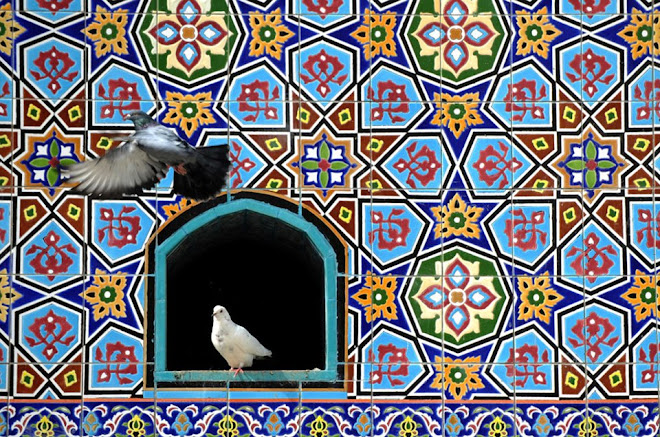
Looking west over the village of al-Husn from the medieval crusader castle of Qalaat Husn, also known as Husn al-Akrad or Krak des Chevaliers.
Photo in this post copyright John Zada and John Bell 2008
Impressions of a Middle East - Past and Present

 During the American invasion of Iraq in the spring of 2003, I travelled as part of a documentary film crew aboard the USS Nimitz. The American aircraft carrier, which was then operating somewhere in the Persian Gulf (we weren't allowed to know where) was busy scrambling aircraft and conducting the messy business of war.
During the American invasion of Iraq in the spring of 2003, I travelled as part of a documentary film crew aboard the USS Nimitz. The American aircraft carrier, which was then operating somewhere in the Persian Gulf (we weren't allowed to know where) was busy scrambling aircraft and conducting the messy business of war.
 For more than two centuries, archaeological excavations at cemeteries in Egypt dating back to Roman times have unearthed some unusual and powerful images. These are the painted mummy portraits, often referred to as "The Fayoum Portraits" - so named because of the frequency in which these artifacts have been unearthed in the lush Fayoum Basin, southwest of Cairo.
For more than two centuries, archaeological excavations at cemeteries in Egypt dating back to Roman times have unearthed some unusual and powerful images. These are the painted mummy portraits, often referred to as "The Fayoum Portraits" - so named because of the frequency in which these artifacts have been unearthed in the lush Fayoum Basin, southwest of Cairo.





 There are recent reports out of Israel that Hizballah is strengthening its positions in southern Lebanon by digging tunnels throughout the troubled area. If these reports are true, then there is indeed a new and strange trend in the Middle East: deep underground in Bint Jbeil, Jerusalem and Gaza, men are busy burrowing away after some strange purpose.
There are recent reports out of Israel that Hizballah is strengthening its positions in southern Lebanon by digging tunnels throughout the troubled area. If these reports are true, then there is indeed a new and strange trend in the Middle East: deep underground in Bint Jbeil, Jerusalem and Gaza, men are busy burrowing away after some strange purpose. 69 Kasr el-Einy Street
69 Kasr el-Einy Street Review: Bitter Lemons, By Lawrence Durrell, Marlow and Company, 1957, 256 pp.
Review: Bitter Lemons, By Lawrence Durrell, Marlow and Company, 1957, 256 pp.








